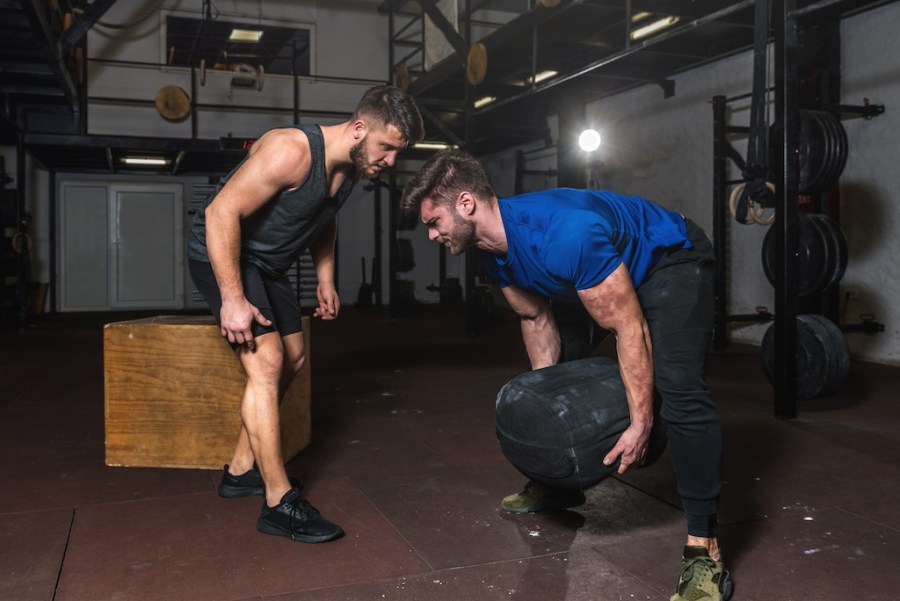Develop functional strength and a balanced physique with this Strongman-style workout from The Movement Blueprint’s Harvey Lawton.
If you’re interested in functional strength, you should be doing a style of Strongman workout like this regularly.
Training modalities seem to have evolved into completely separate entities and disciplines when, in reality, they all rely on the same thing: the body’s ability to create tension, produce force and hold structural integrity when doing so.
Powerlifting, bodybuilding, functional fitness and Strongman all have crossover. You are moving load through space.
Strongman is nothing new, but it is highly effective. Lifting odd objects, carries, sled work, throwing and big compound movements are all actions the body is designed to do. The equipment may not be in your local gym, but you will almost always have access to heavy load – which means you’re 90% of the way there. If your gym doesn’t have a sandbag, grab a heavy dumbbell. If it doesn’t have med balls, work through an American kettlebell Swing; you can always mimic the pattern and desired intensity.
These three blocks are intended to be hard efforts at an eight or a nine out of ten in rate of perceived exertion (RPE). They incorporate fundamental patterns and intensities from the impressive sport of Strongman – albeit at entry level. If you try these movements and are patient with both the technical execution and load progression, you will be a better athlete for it.
How to do this Strongman workout
- Perform each of these workout blocks as six-minute AMRAPs (as many rounds as possible)
- So set your timer to six minutes and work through as many rounds of the exercises as you can
- At the end of the six minutes, rest for four minutes, then move onto the next six-minute block
Block 1: Functional
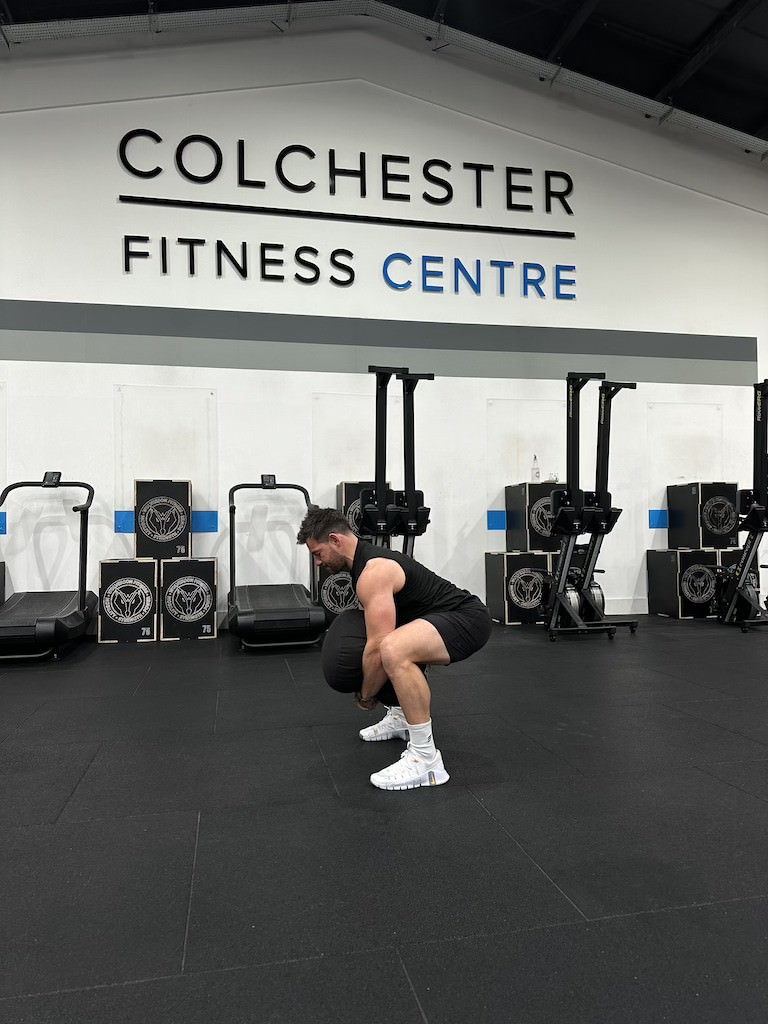
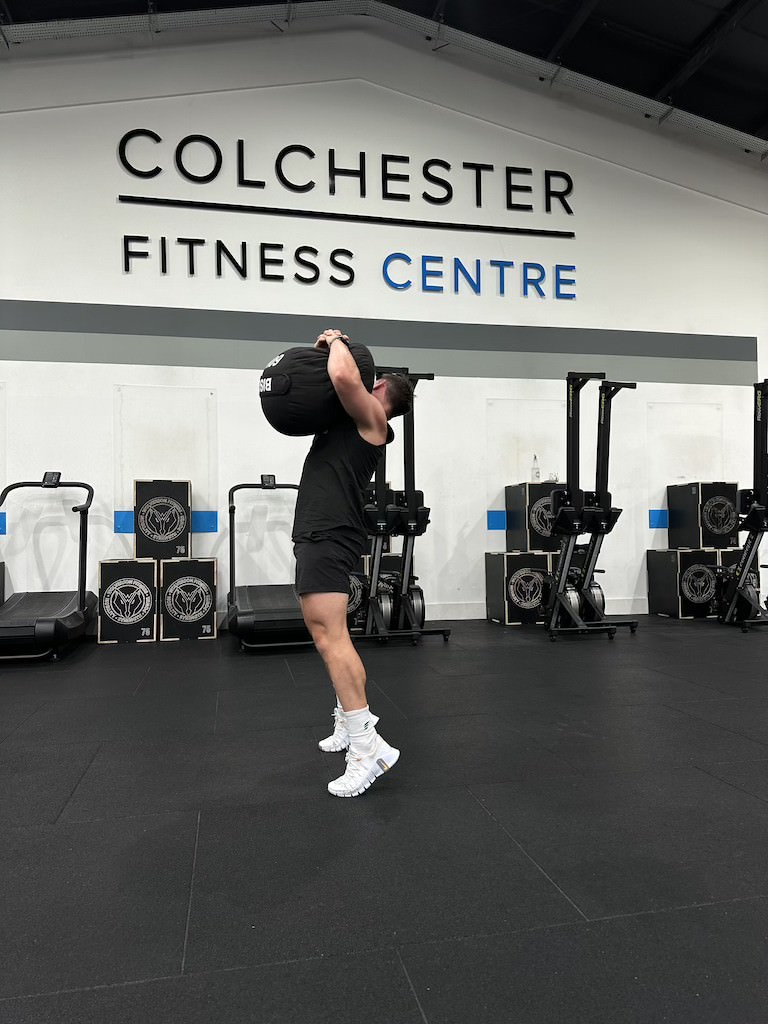
1. Sandbag clean
Reps: 3
Rest: Minimal
- Stand with feet shoulder-width apart, sandbag on the ground
- Squat, grab the sandbag, and keep your chest up
- Explosively lift, extending hips and knees
- Rotate elbows under the sandbag, catching it at chest height
- Stand up fully with the sandbag secure at shoulder level
- Lower the sandbag back to the ground with control
Coaching cues:
- Ensure you start from a hinge position to avoid taking the strain in your lower back.
- Keep the bag close to your body throughout – the further away from your centre of mass, the harder it will be.
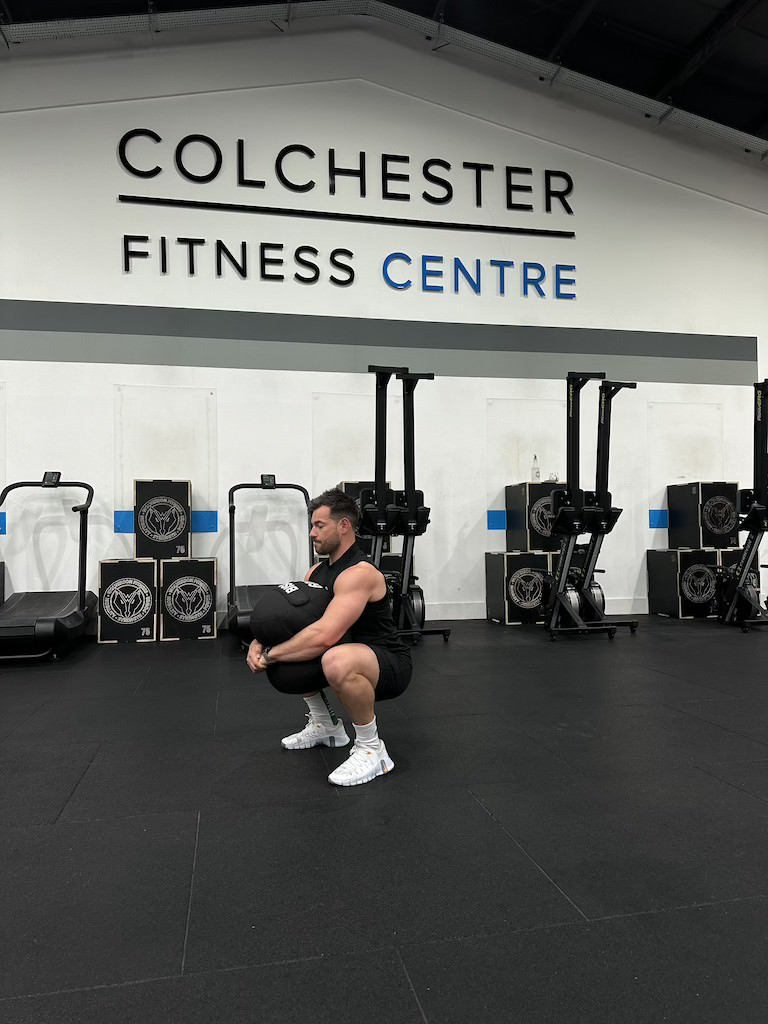
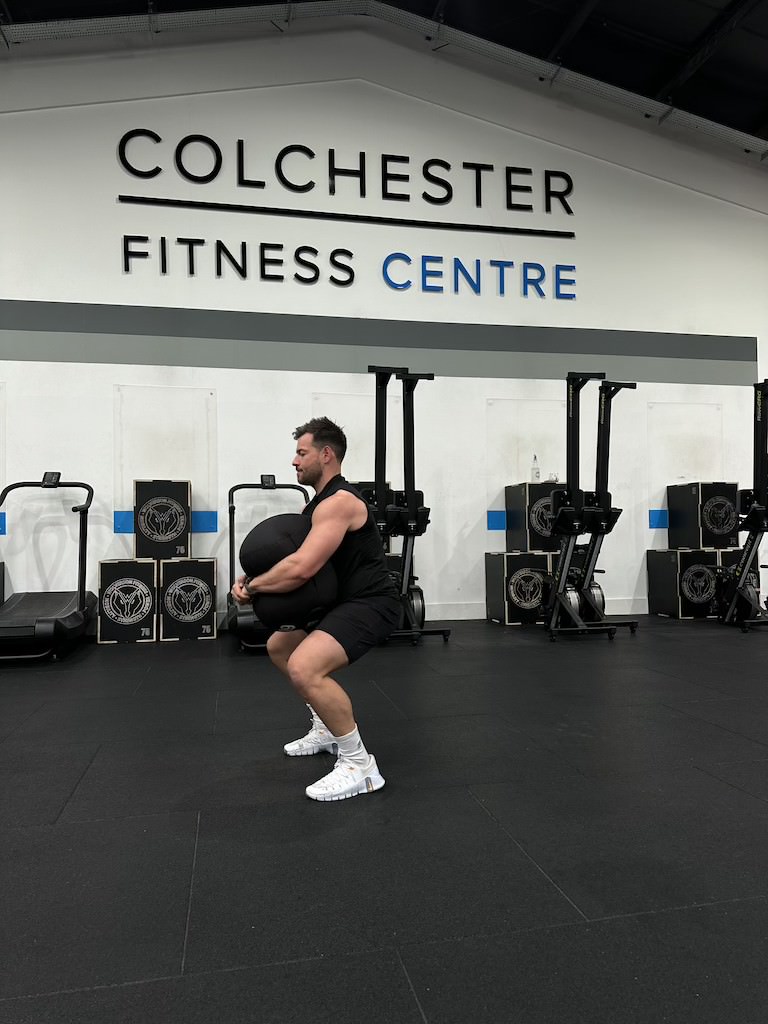
2. Sandbag squat
Reps: 5
Rest: Minimal
- Hug the sandbag close to your chest (use the above method to lift the sandbag up)
- Inhale and brace your core
- Lower your body by pushing your hips back and bending your knees
- Keep your chest up and back straight throughout the movement
- Squat down until your thighs are at least parallel to the ground
- Drive through your heels to stand up
Coaching cues:
- If your ankle mobility requires, place a wedge under your heels to perform the squat.
- Do not let your knees cave inwards.
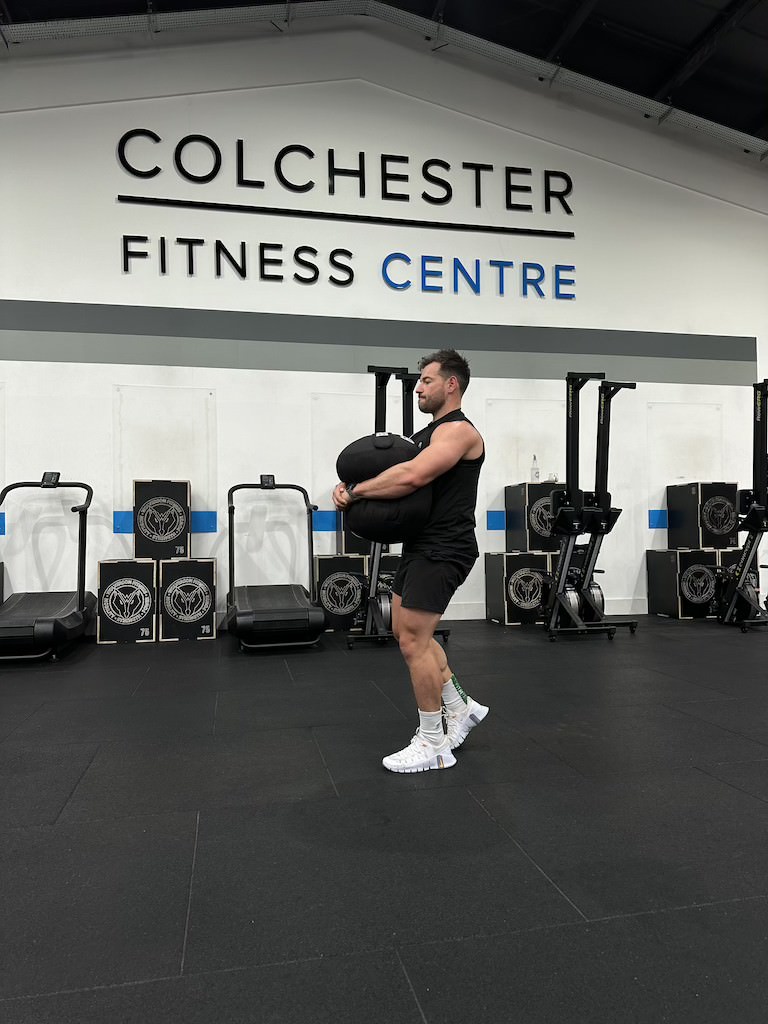
3. Sandbag carry
Distance: 20-30m
Rest: Minimal before repeating exercise 1
- Hug the sandbag close to your chest and, with a tight grip, walk 20-30m, keeping an upright torso
- Walk forward with controlled, deliberate steps
- Keep your head up and look straight ahead
Coaching cues:
- Hold the sandbag on your chest so it sits under your chin – don’t let it slip down as you walk.
- Keep your core engaged to protect your lower back.
Block 2: Strength
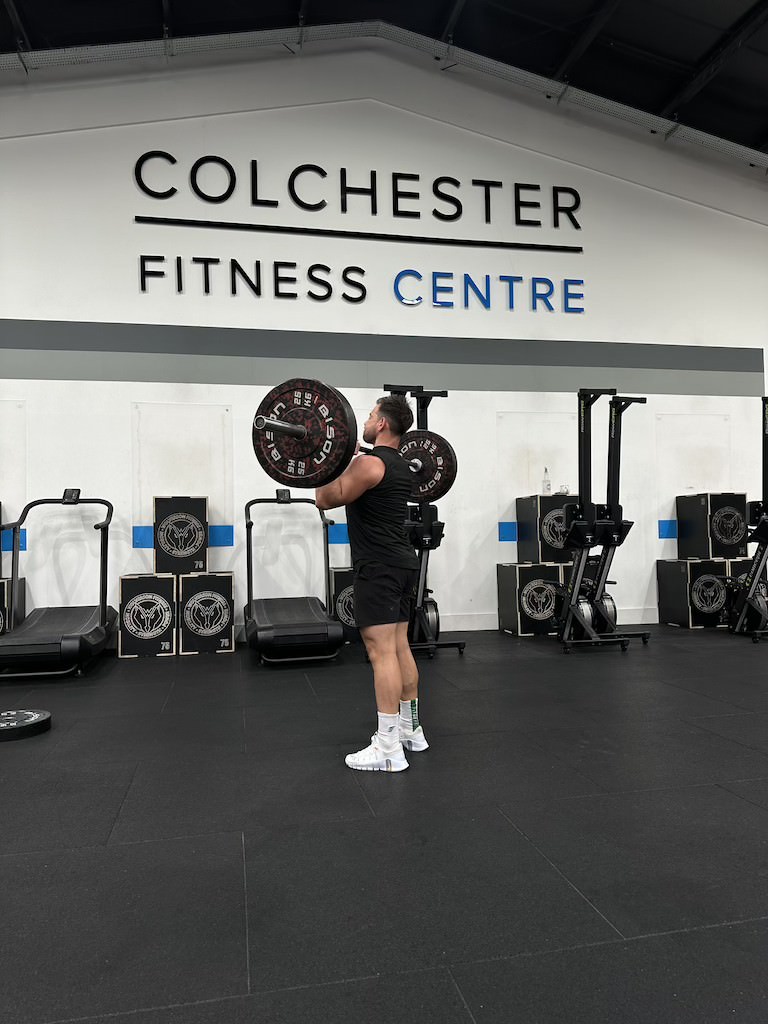
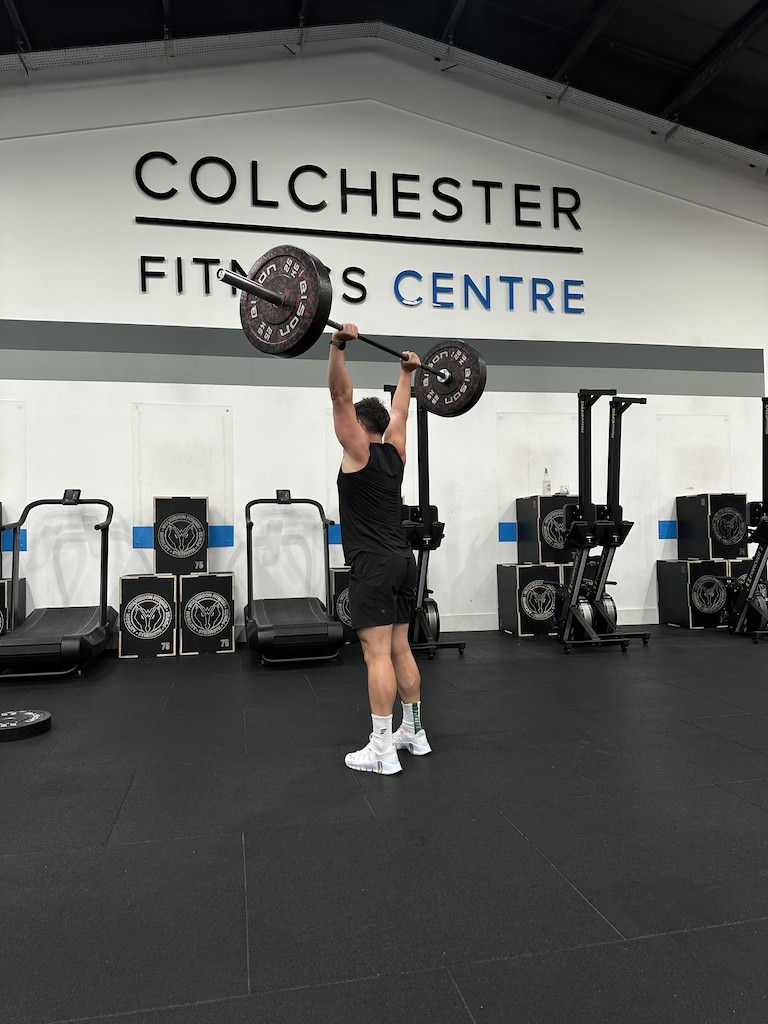
4. Barbell strict press
Reps: 3
Rest: Minimal
- Stand with feet shoulder-width apart and grip the barbell slightly wider than shoulder-width
- Unrack the barbell at chest level, engaging your core
- Press the barbell overhead by extending your arms fully
- Bring your head slightly forward as you lock out at the top
- Lower the barbell back to chest level with control
Coaching cues:
- Include a couple of build sets to work up to your target weight.
- Tighten your core to prevent arching your back.
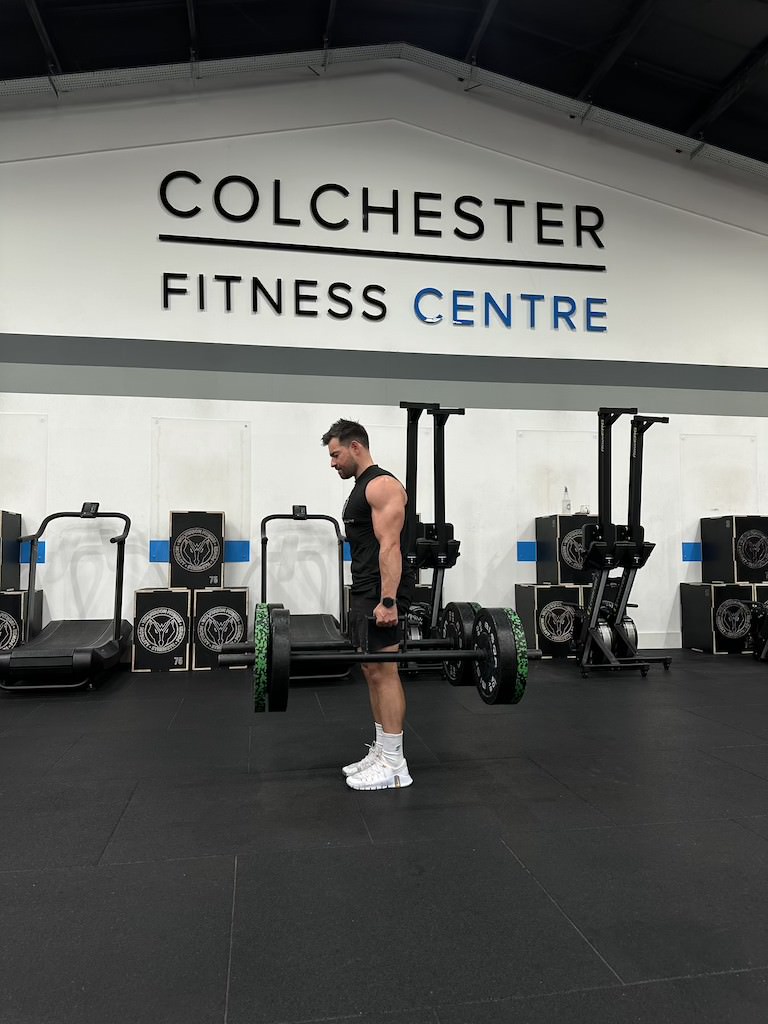
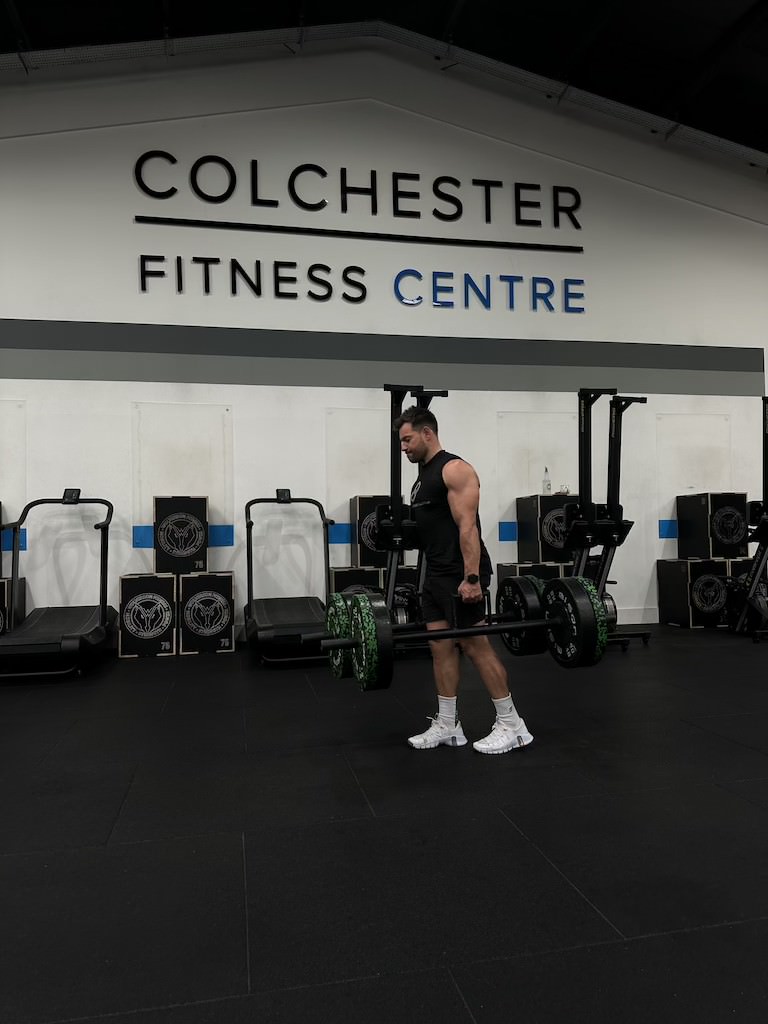
5. Farmer’s carry
Distance: 30m
Rest: Minimal before repeating exercise 4
- Carry heavy load and walk 30m, moving fast and aggressively
- As loads get heavier, you will need to think about your steps – too long and you’ll lose tension and stability, too short (for you) and you’ll end up falling over your feet
- Practice with build-up rounds before your working sets
Coaching cues:
- If grip is the limiting factor, you may want to use straps.
- Stand tall with shoulders back and chest up.
Block 3: Power
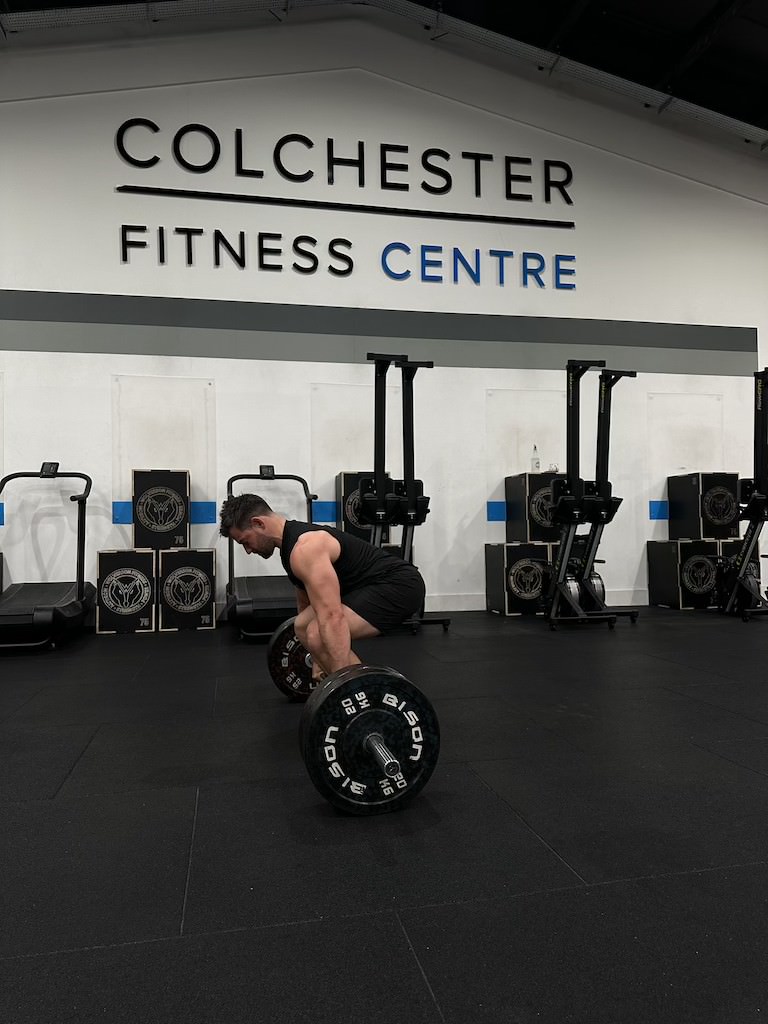
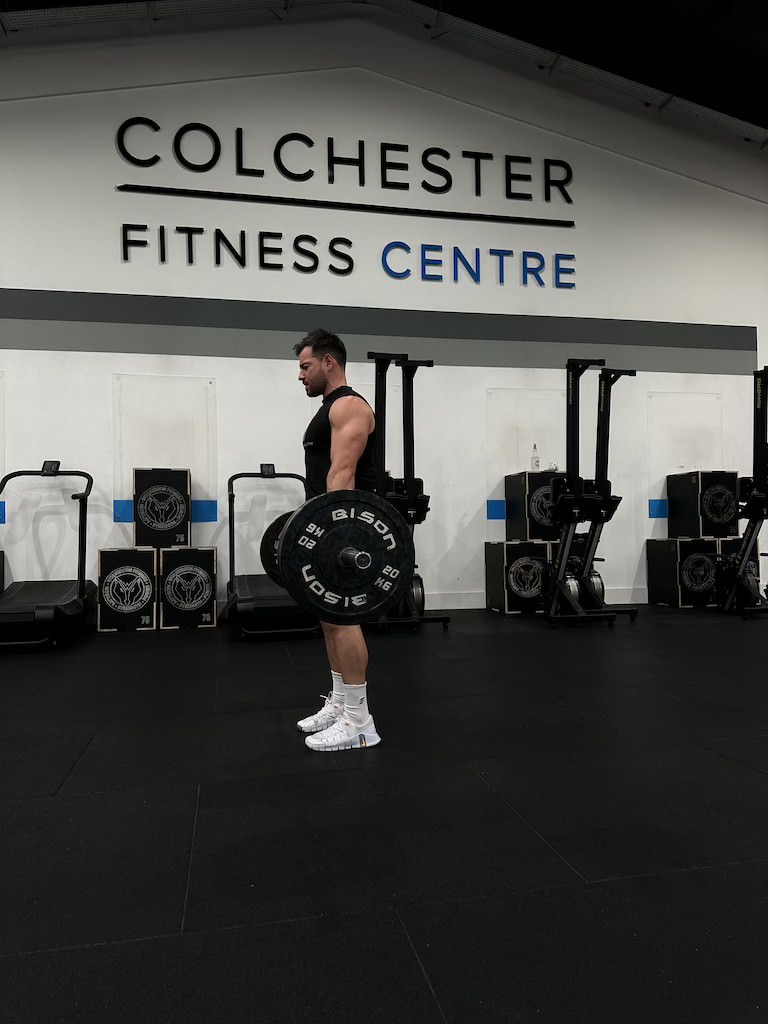
6. Barbell deadlift
Reps: 3
Rest: Minimal
- Stand with feet hip-width apart, barbell over your mid-foot
- Bend at the hips and knees, and grip the barbell just outside your knees
- Keep your back straight, chest up, and shoulders slightly in front of the bar
- Drive through your heels, extending your hips and knees simultaneously
- Stand up straight, hips fully extended, shoulders back
- Reverse the movement, keeping the bar close to your body, lowering it to the ground with control
Coaching cues:
- To help create tension through the lift, exhale powerfully as you lift the bar.
- As you lift, focus on pushing through your heels to activate your glutes and hamstrings.
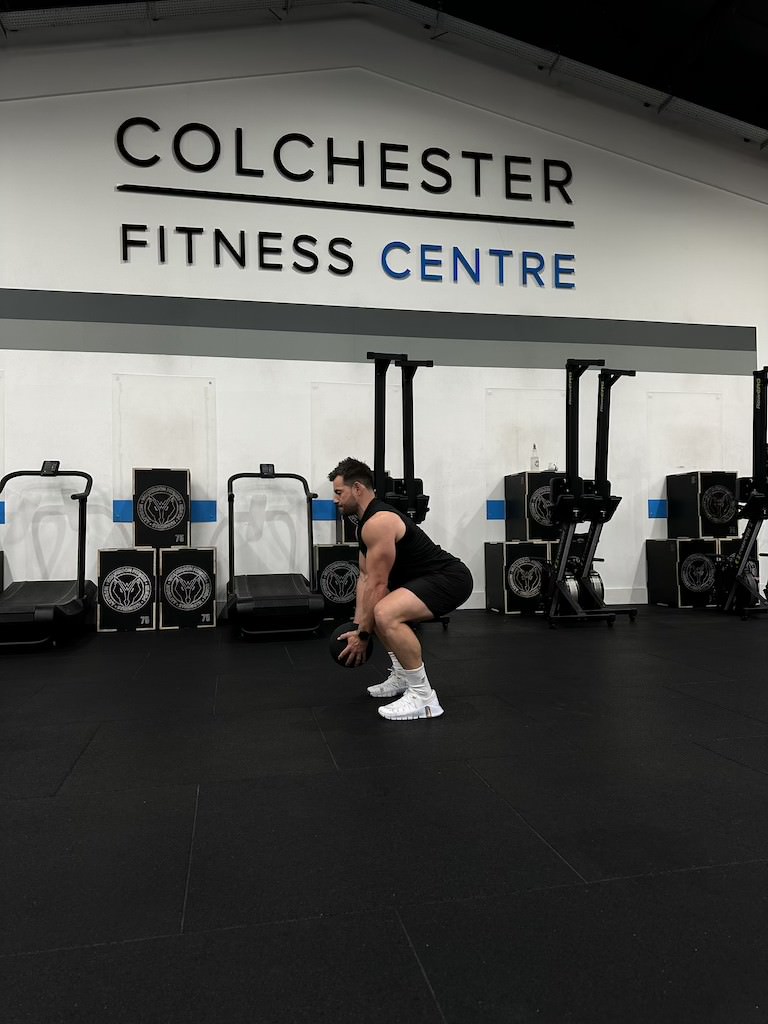
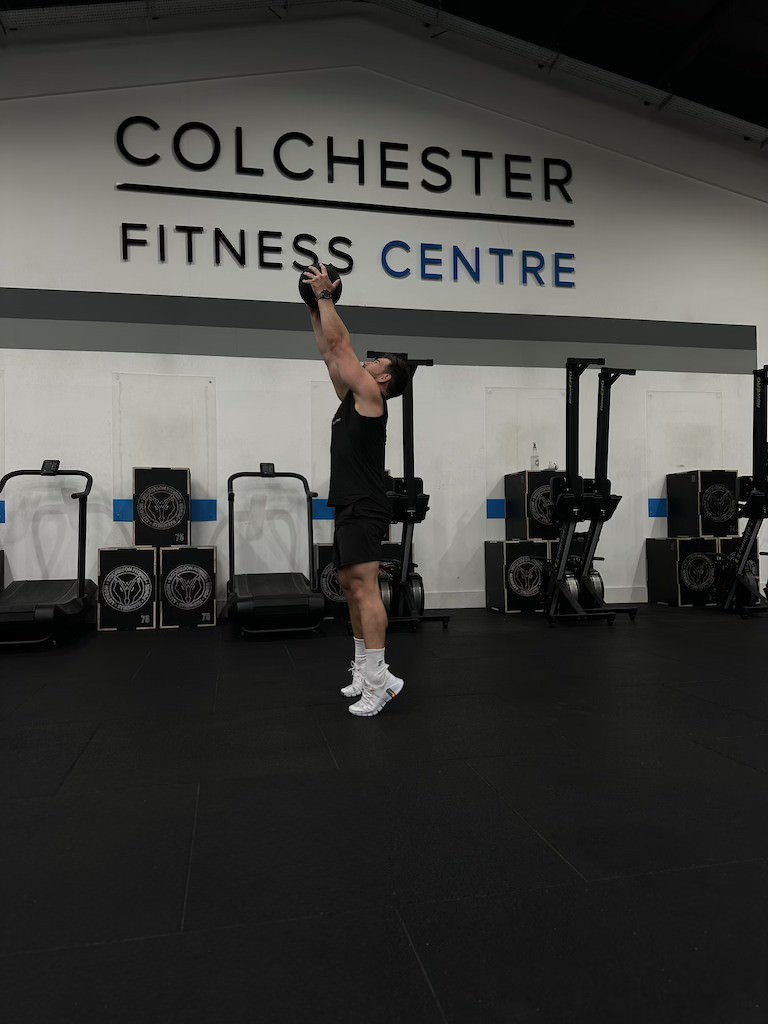
7. Medicine ball scoop throw
Reps: 3
Rest: Minimal before repeating exercise 6
- Stand with feet shoulder-width apart, holding the medicine ball
- Squat down and scoop the ball between your legs
- Stand up explosively and release the ball at chest height, throwing it up as high as you can
- Bend your knees to catch the descending ball
Coaching cues:
- Focus on speed and power, targeting maximal effort each rep.

